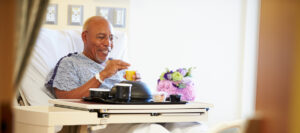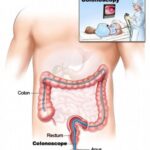Colonoscopy

A colonoscopy is conducted to view the inside of the colon and can detect polyps (pre-cancerous growths), tumors, ulcers, inflamed tissue and bleeding. Colonoscopy is commonly used as a screening tool to prevent and treat colon cancer.
During a colonoscopy, a long, flexible tube called a colonoscope is inserted into the rectum. A tiny video camera at the tip of the tube allows the doctor to view the inside of the entire colon. If necessary, polyps or other types of abnormal tissue can be removed through the scope during a colonoscopy. Tissue samples (biopsies) can be taken during a colonoscopy as well.
Preparation
Colonoscopy is usually performed on an outpatient basis. For the colonoscopy to be thorough and safe, your bowel must be completely empty, so you may have to follow a clear liquid diet for one or two days beforehand. A clear liquid diet includes fluids that you can see through such as tea without milk, broth, ginger ale, clear soda and water. You will need to take a laxative preparation one day prior to your colonoscopy. Consult your doctor regarding your current medication. If you are a woman of child-bearing age, you will be asked for a urine or blood sample to check for pregnancy because medications given during the test can be harmful to a fetus.
You will be asked to bring the following when you arrive for the colonoscopy:
- A list of the medications you are taking
- A list of any allergies you may have
- Health insurance cards
- A responsible adult to take you home after your procedure. You will not be discharged unless that person is there.
- Please leave all jewelry at home.
Procedure
 After a brief review of your health history, allergies and current medications, you will change into a hospital gown and a nurse with start an intravenous (IV) line to give you medication that will make you more comfortable during the procedure. Equipment to help the nurse and doctor monitor your heartbeat will be connected to you. You will be asked to remove eyeglasses and dentures. An oxygen cannula (two short prongs fitted in your nose) will allow a low dose of oxygen to be admitted to you during the procedure.
After a brief review of your health history, allergies and current medications, you will change into a hospital gown and a nurse with start an intravenous (IV) line to give you medication that will make you more comfortable during the procedure. Equipment to help the nurse and doctor monitor your heartbeat will be connected to you. You will be asked to remove eyeglasses and dentures. An oxygen cannula (two short prongs fitted in your nose) will allow a low dose of oxygen to be admitted to you during the procedure.
You will lie on your left side and will be sedated before the doctor passes the lubricated tube into your rectum and colon. As the tube passes through the curves of your colon, you may feel pressure or discomfort, but you will receive medication throughout the procedure to keep you comfortable. The doctor will put air into your colon in order to see the lining and you may feel some bloating or abnormal discomfort from the air. The procedure will take about 45 minutes. Once complete, a nurse will take you to a recovery room to wait for an hour or two until the sedative wears off. Within an hour after the procedure, you will be given a cold drink and light nourishment. When you are ready to go home, the nurse will discuss post procedure instructions about resuming medications and diet and will answer your questions.
Image adapted from Colonoscopia.jpg on Wiki Commons
Results
Any polyps or other potential abnormalities removed during the test will be sent to the lab for testing. You will learn the results of your colonoscopy within a week. If you have pre-cancerous polyps or growths, having a colonoscopy may be the first step in preventing colon cancer and saving your life. 98 percent of the time, a colonoscopy will either show everything to be normal or identify pre-cancerous growths that can be removed.
Potential Complications
You may experience mild cramping for up to an hour and feel groggy for the rest of the day of your procedure, but you should return to normal activities by the following morning. Serious risks with colonoscopy are very uncommon. Risks include bleeding, severe abdominal pain and temperature above 101 degrees. In extremely rare cases, a perforation, or tear, in the colon wall can occur. These complications may require hospitalization and possibly surgery. You may feel bloated or pass gas for a few hours after the exam. Walking may lessen your discomfort.
Due to the mild sedation, you should not drive or operate machinery following the exam. For this reason, you must arrange for someone else to drive you home after the exam.